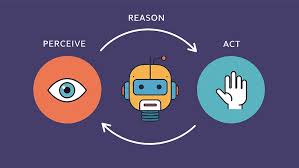Designing AI agents effectively involves a structured approach, starting with defining clear objectives and aligning them with business needs. It also requires careful data collection and preparation, selecting the right machine learning models, and crafting a robust architecture. Finally, building in feedback loops and prioritizing continuous monitoring and improvement are crucial for success.
Here’s a more detailed breakdown:
1. Define Objectives and Purpose:
- Clearly articulate what the AI agent needs to achieve and how it will contribute to your business goals.
- Ensure the objectives are measurable and align with overall strategies.
2. Data Collection and Preparation:
- Gather the necessary data to train the AI agent, ensuring it’s accurate, relevant, and representative.
- Preprocess the data to remove inconsistencies, address bias, and prepare it for model training.
3. Choose the Right Models and Tools:
- Select appropriate machine learning models based on the task at hand, whether it’s processing text, analyzing images, or making predictions.
- Consider using frameworks like LangChain or LangGraph for building complex agentic systems.
4. Design the Agent Architecture:
- Structure the AI agent’s architecture to ensure robustness, scalability, and the ability to handle complex tasks.
- Consider using a modular design, where the agent is composed of smaller, interchangeable components.
5. Training and Refinement:
- Train the selected models with the prepared data and fine-tune them to achieve optimal performance.
- Use techniques like instruction-tuning or Reinforcement Learning with Human Feedback (RLHF) to align the agent with user expectations.
6. Testing and Validation:
- Thoroughly test and validate the AI agent before deployment to ensure it performs as expected.
- Set up proper evaluation and testing for the agent workflow, including unit tests and overall performance metrics.
7. Deployment, Monitoring, and Iteration:
- Deploy the AI agent into the business environment and monitor its performance.
- Incorporate feedback loops to continuously improve the agent’s capabilities.
- Regularly audit and refine the agent to ensure it remains effective and aligned with evolving needs.
8. Key Considerations:
- Simplicity and Scalability: Start with simple designs and gradually add complexity as needed.
- Transparency and Explainability: Log the agent’s decision-making process for debugging and monitoring.
- Edge Case Handling: Anticipate potential issues and include instructions to handle them effectively.
By following these principles, you can design AI agents that are not only effective but also robust, scalable, and aligned with your business objectives.













